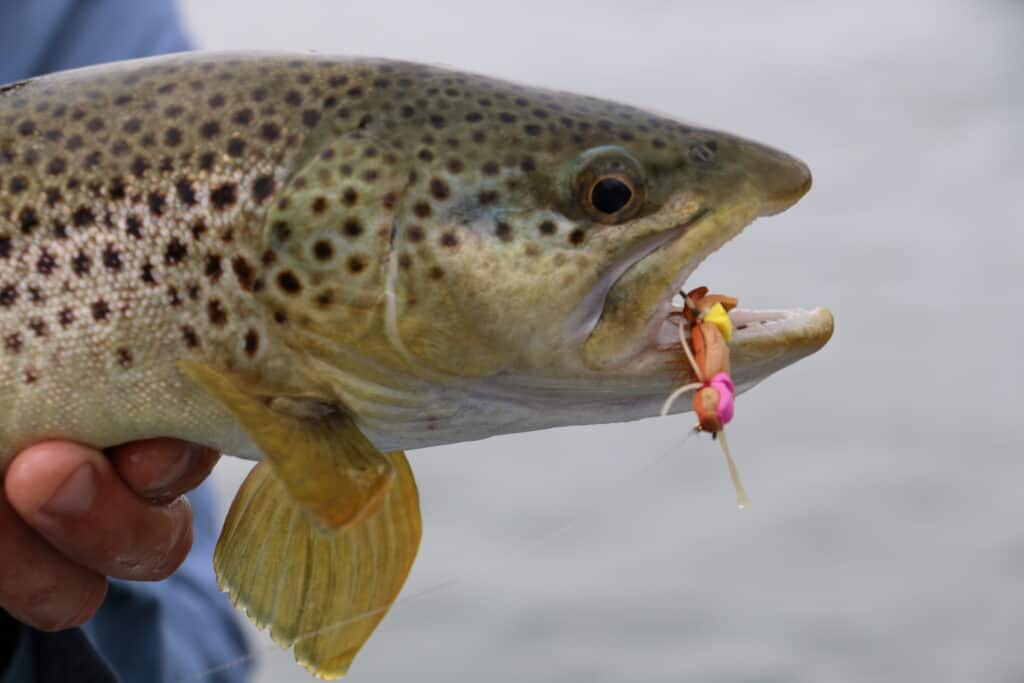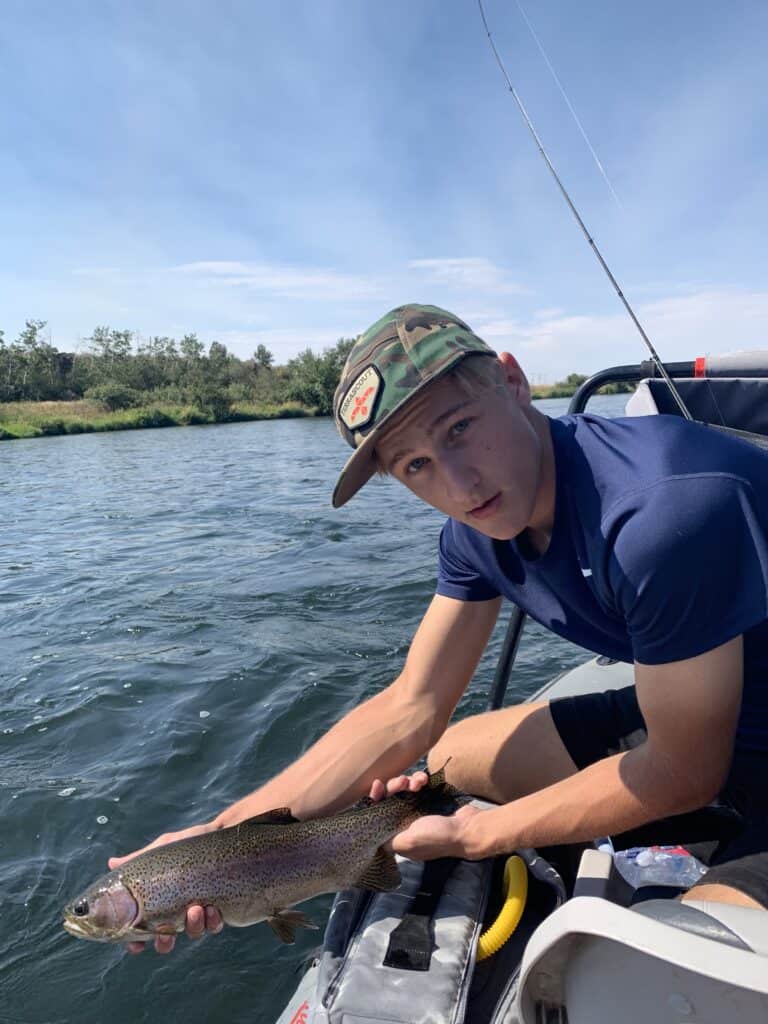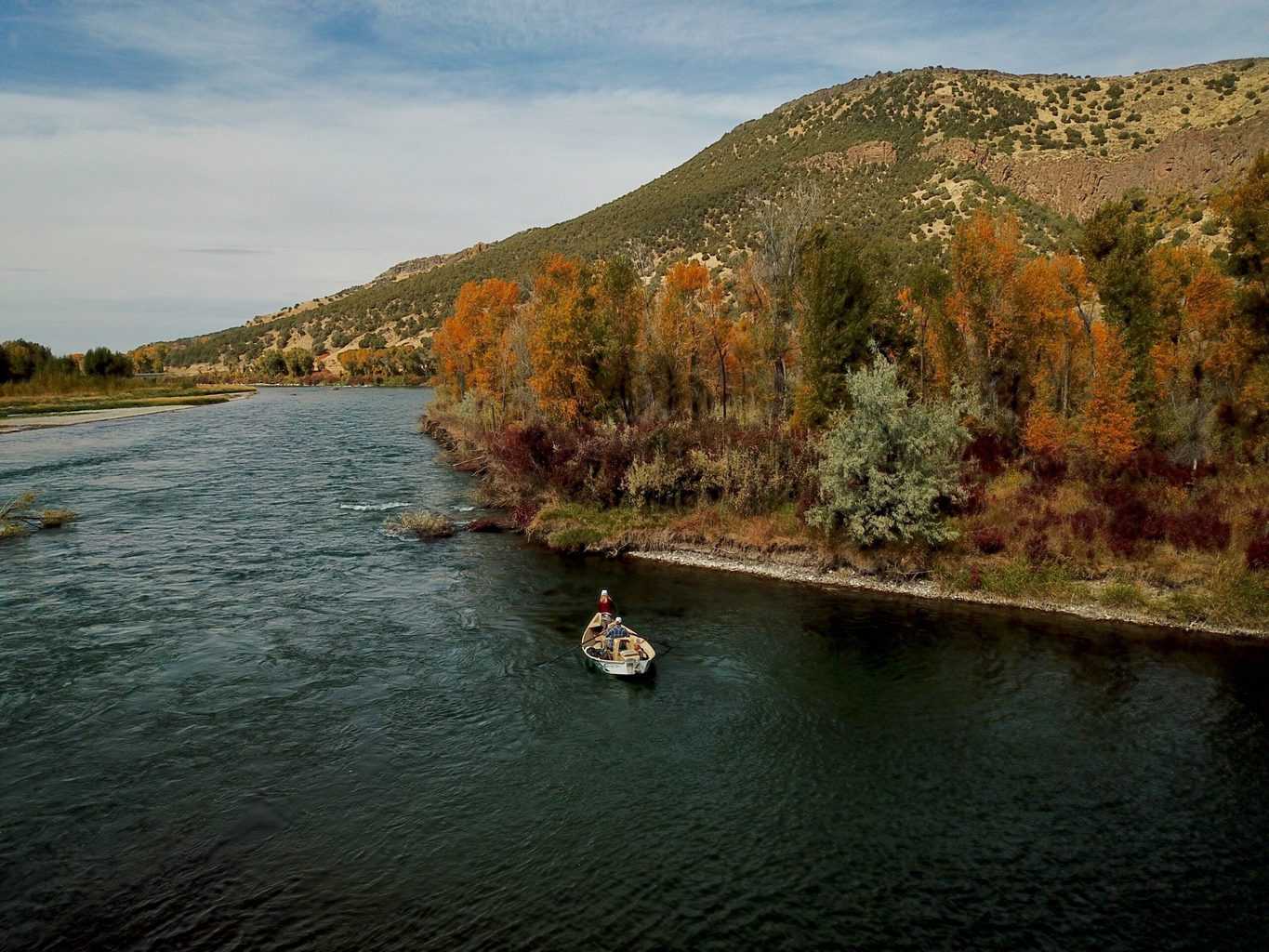The Henry’s Fork of the Snake River, known by locals simply as the “Hank,” is arguably the most famous river in Idaho.
The river’s legendary fishing for large rainbow and brown trout draws anglers from far and wide, and the river truly does live up to its reputation.
Located in Eastern Idaho, just a few hours west of the Tetons in Wyoming, the Henry’s Fork offers a lot more than just a picturesque landscape – the Henry’s Fork is a heaven on Earth if you like catching big fish.
The Henry’s Fork is mainly popular with fly fishermen, and it was a slam dunk choice for our round up of Best Fly Fishing Rivers in Idaho.
Bait fishing is not allowed, barbless hooks are required, and a multitude of prolific hatches occur throughout the year.
Ready to learn more? Let’s dive into a few more things that make the Henry’s Fork such a special river.
When to Fish

Late spring is the most popular time to fish the Henry’s Fork.
The salmonfly hatch occurs during mid- to late May, and that hatch alone is enough to draw thousands of anglers to the river in search of big trout hitting dry flies.
Another reason the Henry’s Fork is so popular in late spring and early summer is because June 15th marks the opening of the Ranch, a near-mystical and legendary stretch of the Henry’s Fork known for its productive dry fly fishing.
If you decide to head out to the Henry’s Fork during late spring and early summer, you certainly won’t be alone – but the river doesn’t get nearly as crowded as some other famous streams in the Northwest (looking at you, Madison River).
For a more peaceful and solitary experience on the Henry’s Fork, fish the river the rest of the year, especially from late July into early fall and again in early spring. Winter fishing is an option at times.
Because of the river’s remote location, it isn’t consistently packed with locals.
The majority of the pressure on the Henry’s Fork comes from anglers who travel from surrounding states (and countries!) to fish the salmonfly hatch and the Ranch opener, and once that dies down, you can have most of the water all to yourself.
Remember that different stretches of the river are open at different times; the entire river is not open year-round.
Stay up-to-date on the specific regulations here.
Trout Fishing

The Henry’s Fork is, most notably, home to healthy populations of large brown and rainbow trout.
There are also whitefish present in the river, but those are less commonly targeted, and we won’t be covering them in this article. Catching whitefish on the Hank is typically a byproduct of nymphing for trout.
As we’ve mentioned, late spring and early summer is the most popular timeframe to visit the Henry’s Fork, and there’s a reason for that: The salmonfly hatch on the river is second-to-none, and it makes for some very productive fishing.
Salmonflies aren’t the only bugs that get big trout to rise, though.
Pale morning duns, caddisflies, mayflies, and green drakes are also very common hatches at various times of the year, and these are all patterns you’ll want to have in your collection if you are fishing at the Ranch.
If you’re fishing the lower stretches of the river, hopper-droppers, attractor patterns, and a wide variety of nymphs are productive.
Location and Access
The Henry’s Fork is located in a relatively remote region of Idaho, with the nearest towns including Rexburg and Idaho Falls.
There isn’t a big city within hundreds of miles of the river. In fact, Salt Lake City, Utah, to the south is an hour closer to the Henry’s Fork than Boise.
There are two popular stretches of the Henry’s Fork.
The first is the stretch of river that runs from Box Canyon downstream to St. Anthony.
This is a stretch of water that’s characterized by numerous dams and very productive water.
Unlike the Ranch, which is a much smaller and often more crowded stretch, this part of the river offers plenty of open water even during peak season.
Of course the second stretch of river, and likely the most famous worldwide, is a short stretch of water best known as the Ranch.
Officially, this area is called Harriman State Park, and it offers fly fishermen an excellent chance to stalk and catch big trout on dry flies.
Though there is ample public access on the river, it’s difficult to fish without a boat. There are plenty of places to rent rafts and drift boats if you don’t happen to own one.
If you simply don’t have access to a drift boat or a raft, the Ranch is a better bet than the lower portion of the Henry’s Fork.
The Henry’s Fork has rightfully earned its reputation as being one of the best trout rivers in the world.
It’s a dynamic river that offers something no matter when you decide to fish it – give the Henry’s Fork a shot!
Carter Reschke is a freelance writer based in Oregon. Passionate about the outdoors, Carter is a fly fishing aficionado and spends his days on the river when he’s not writing.

